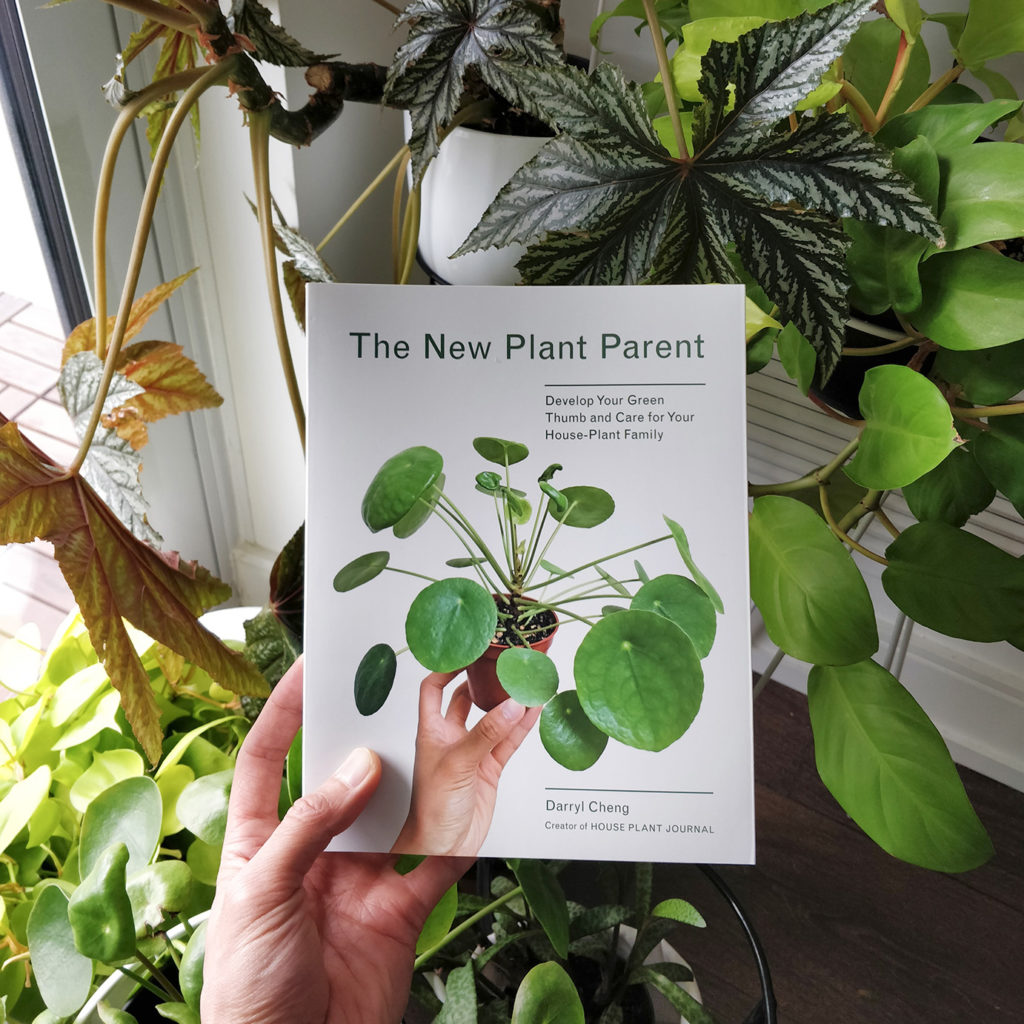Being able to catch an infestation at the earliest possible stage will give you the best chance at fully eradicating it.
More Houseplant Pest Resources:
– Spider Mites (Photo Gallery and Treatment Methods)
– Scale (Photos and Treatments)
– Mealybugs (Photos and Treatments)
I went through 3 years where I was dealing with sporadic thrips infestations and ended up throwing away many plants, but in that misery/frustration, I took lots of photographs!
I hope they will help you increase your visual acuity for identifying thrips!
My recommended pest-control products
Thrips seem to especially love attacking Monsteras so here are some photos of what a thrips-damaged Monstera deliciosa looks like – first, some minor damage appears as little greyish patches:
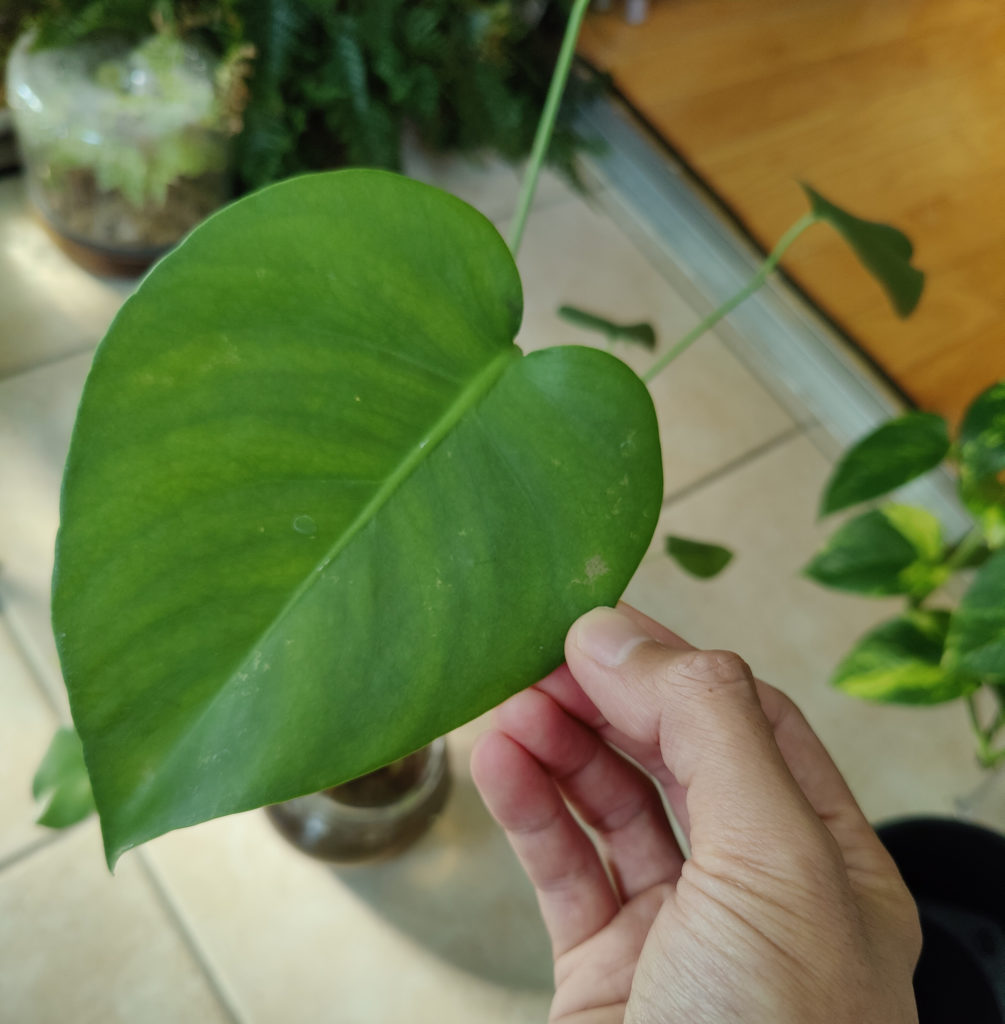
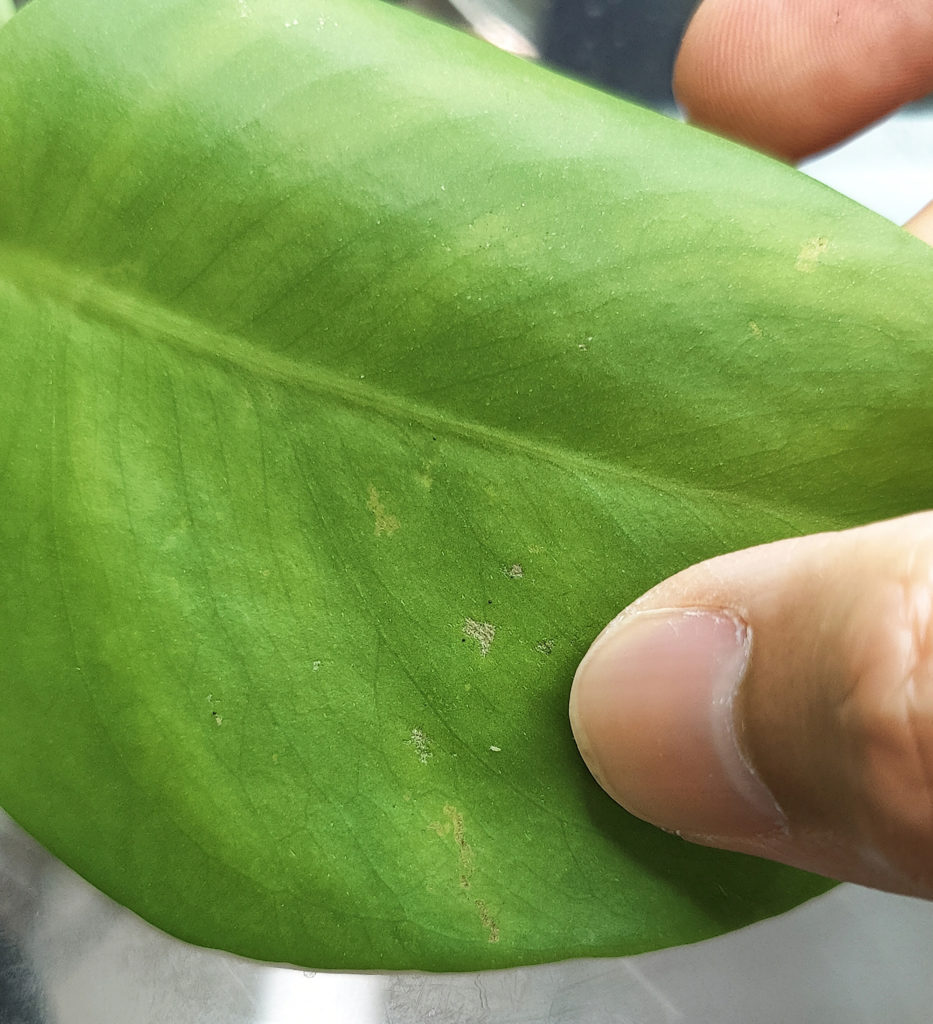
And a severely infested Monstera deliciosa (I would discard at this point):
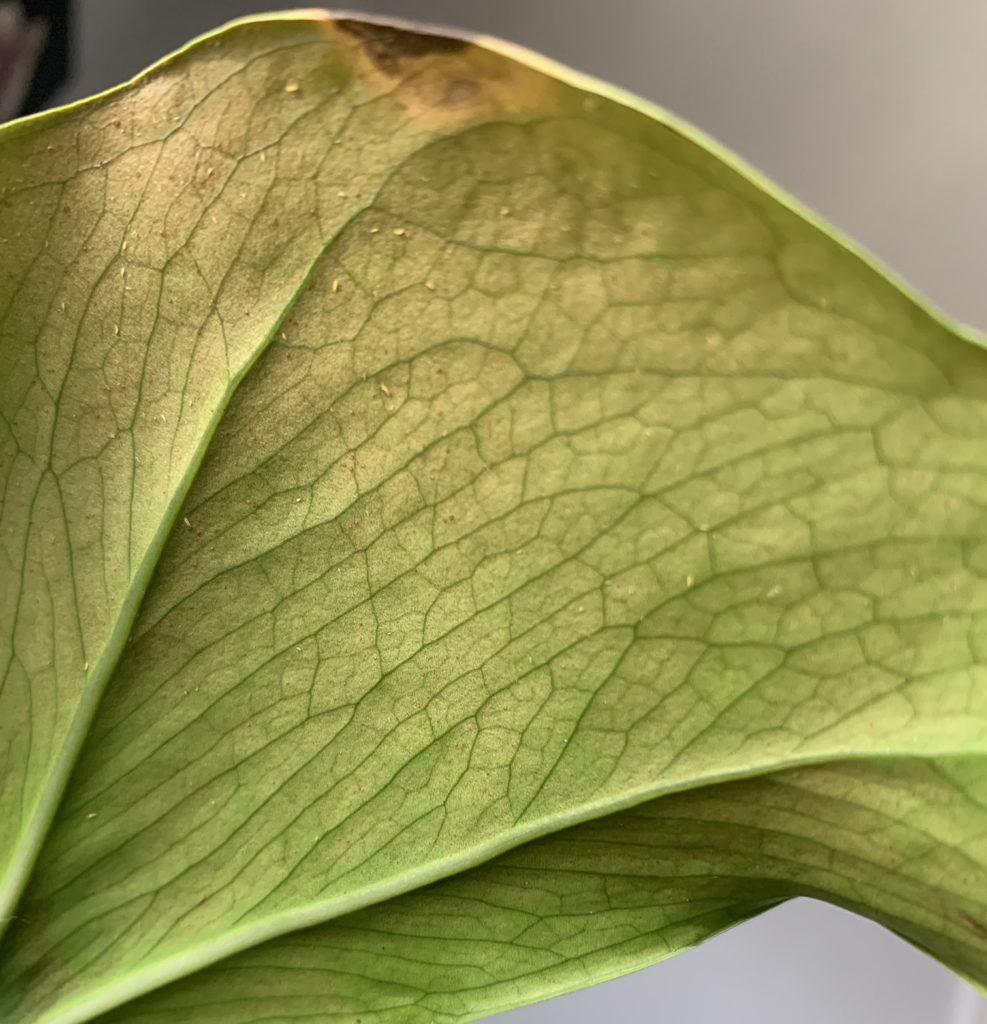
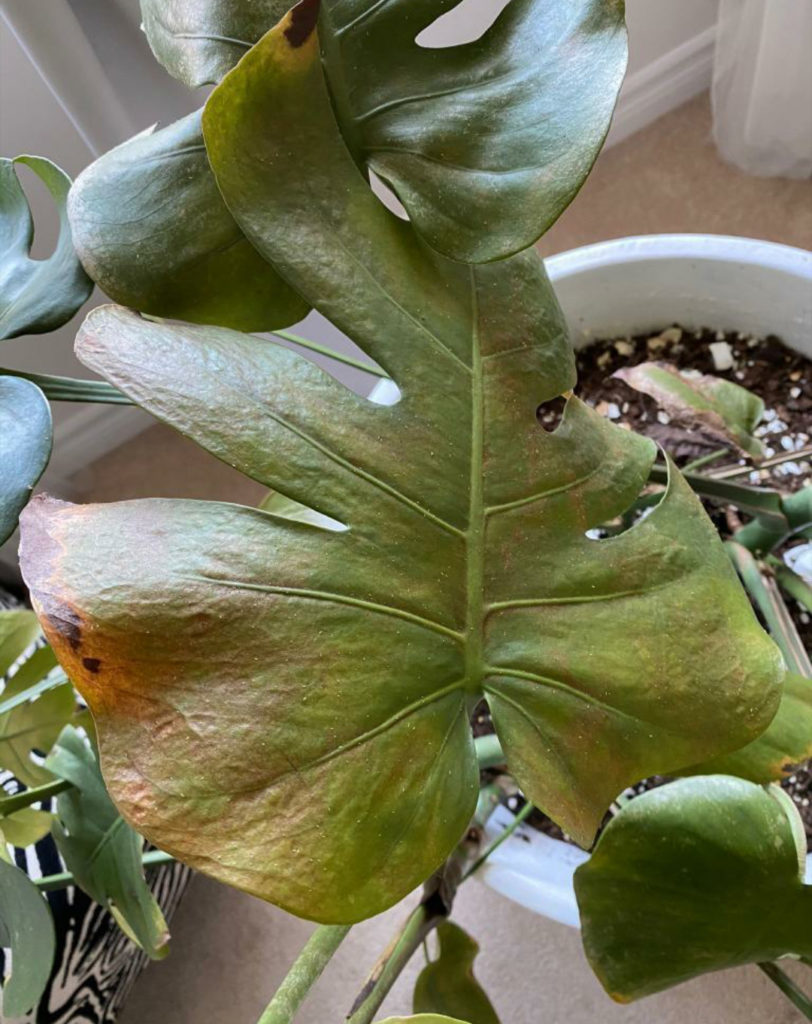
BTW, both the plural and singular word is thrips – there is no such word as a thrip!
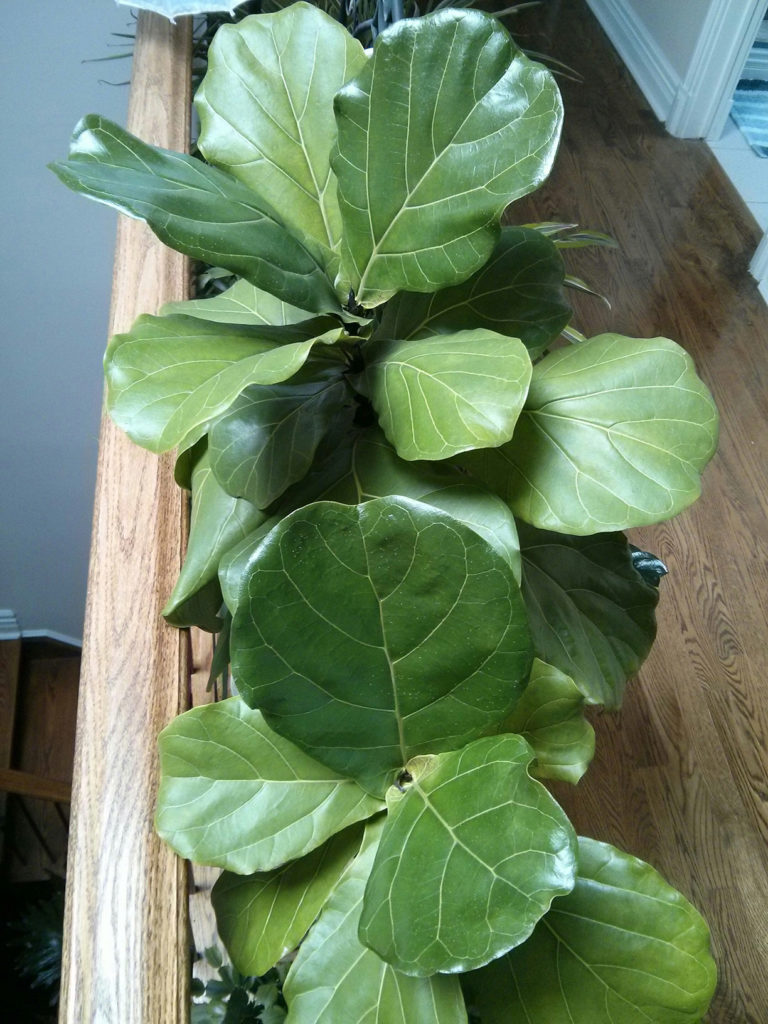
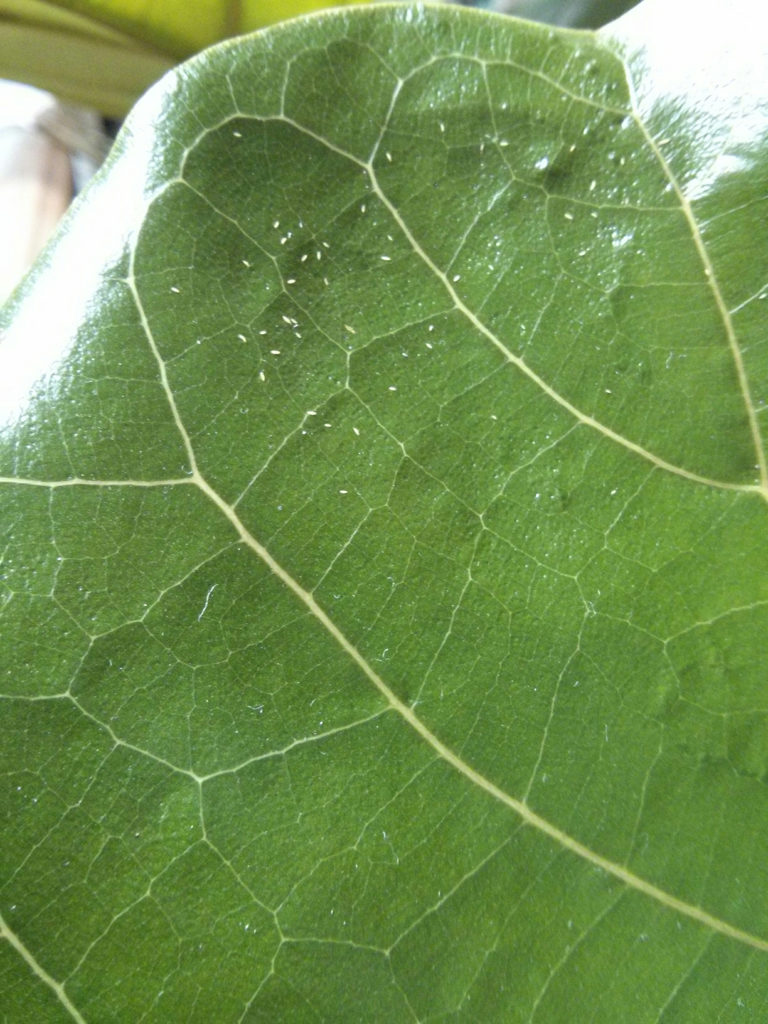
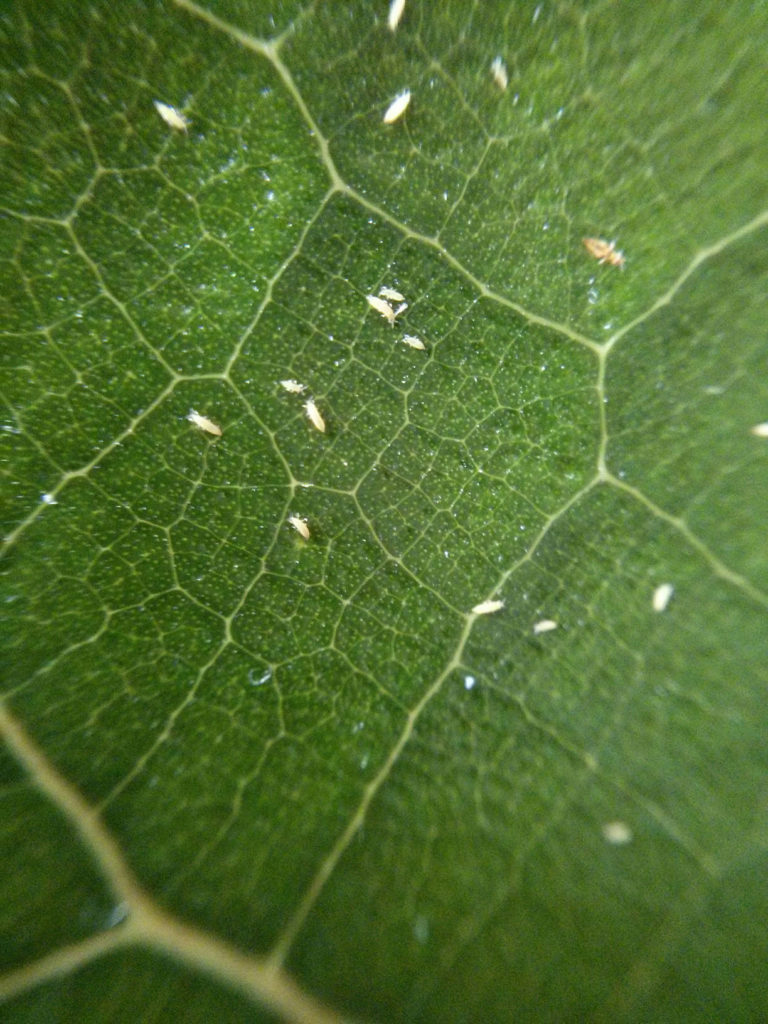
Disclaimer: this article contains Amazon Affiliate links. Purchasing from these links helps to support House Plant Journal content. Thank you!
Since the leaves of the fiddle leaf fig are quite tough, I would use a LINT ROLLER or MASKING TAPE to physically remove as many thrips as possible followed by treatment with INSECTICIDAL SOAP (not dish soap).
Expect to fight against thrips for a while – you won’t completely get rid of them in one shot!
The annoying thing about thrips is that they lay their eggs INSIDE the plant tissues, which means the treatments (physical removal + insecticidal soap) only work to kill the larvae and adults. That’s why you must REPEAT the treatments. I do physical removal as often as possible – literally whenever I see a thrips; and the insecticidal soap spraying on a weekly basis, but sometimes I get lazy and wait 2 weeks.
There’s one part of the thrips life cycle where they hide in the soil so if the infestation is severe, repotting can also help. But focus your efforts on physical removal and using insecticidal soap on a regular basis.
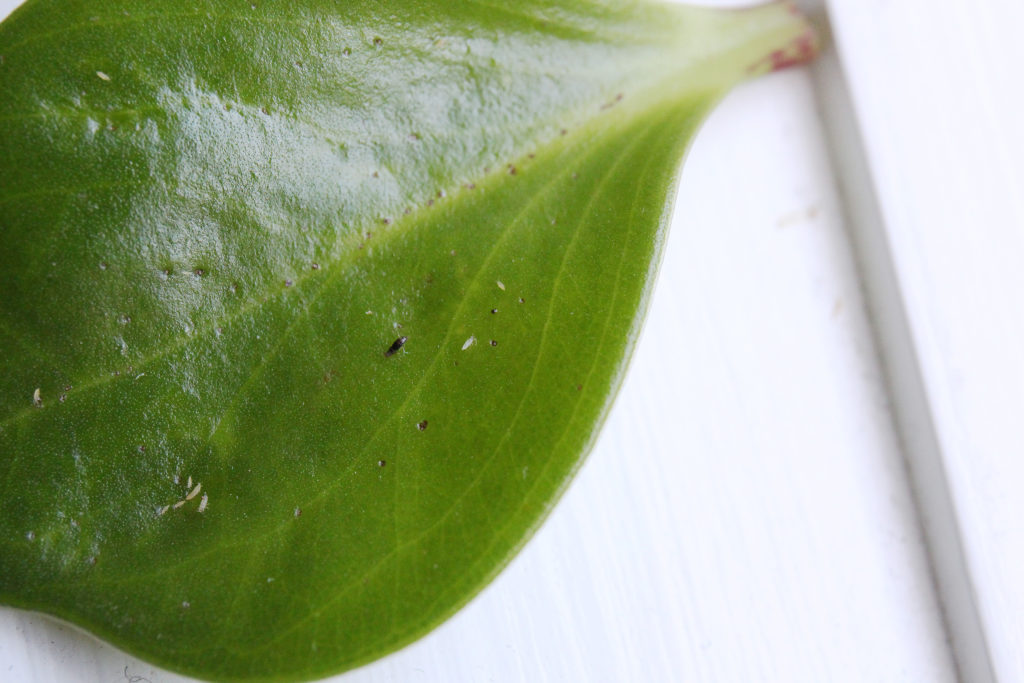
Thrips eat away at the leaf surface, leaving silvery scratch marks – if you see this kind of leaf damage, check both sides of the leaf – look for the light yellow larvae and/or the thin black adult thrips.
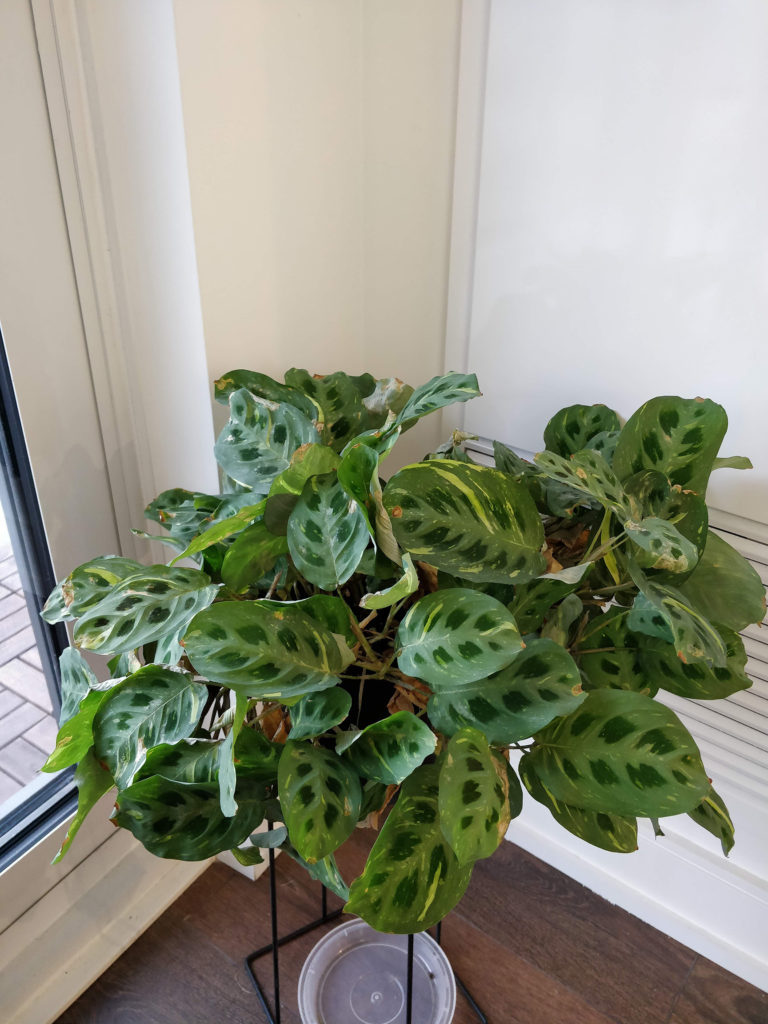
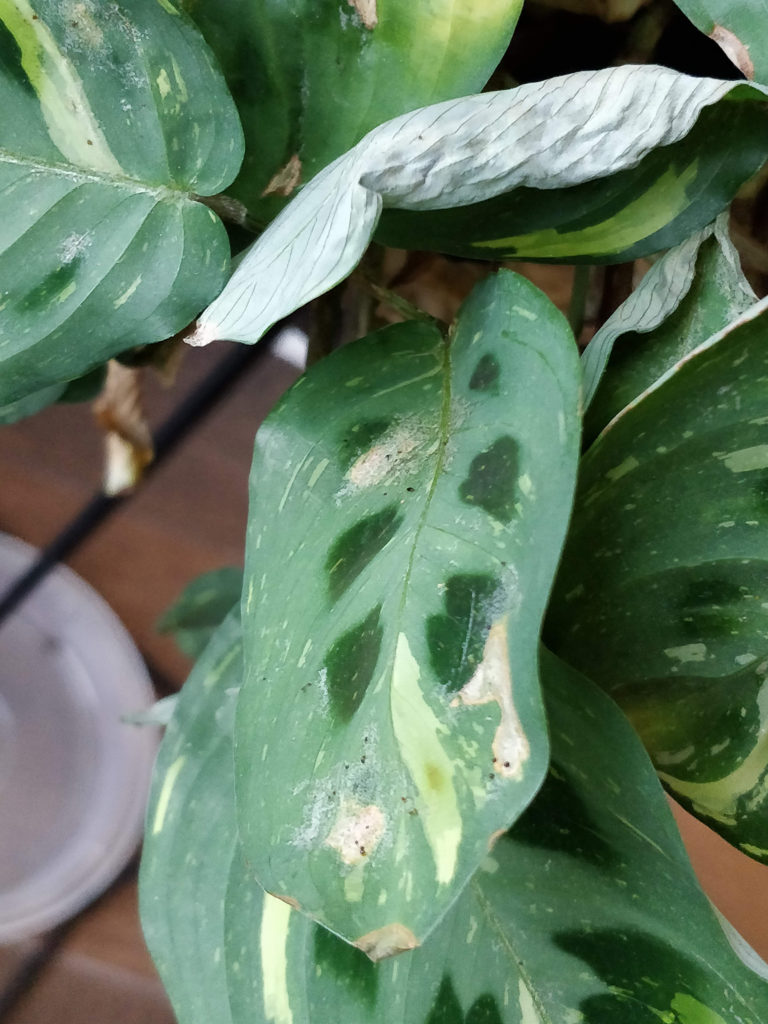
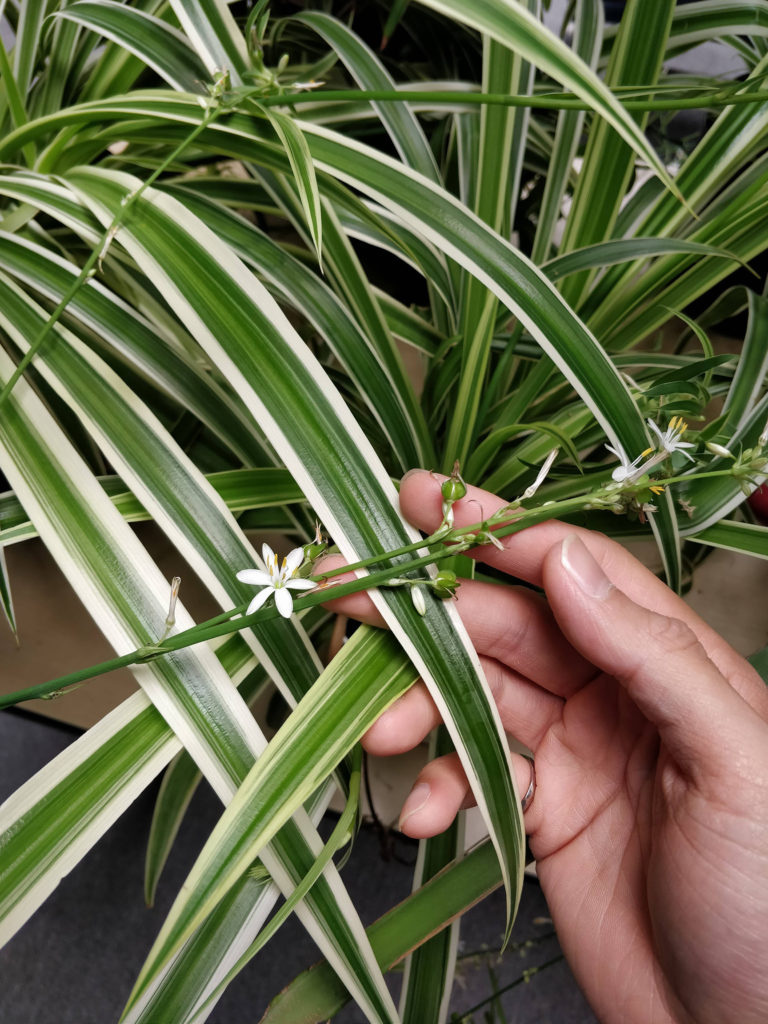
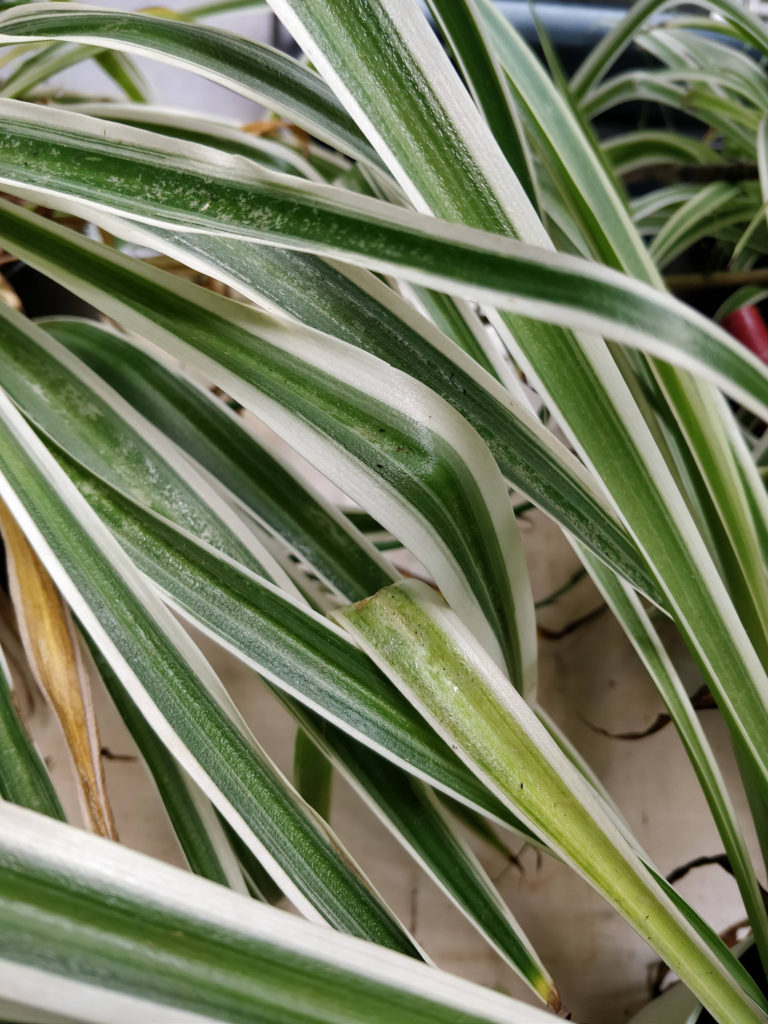
These spider plants were at my church but I was away for 3 weeks and the infestation was too great – I had to throw away the plants before they spread further onto my Monstera, which I would never throw away:
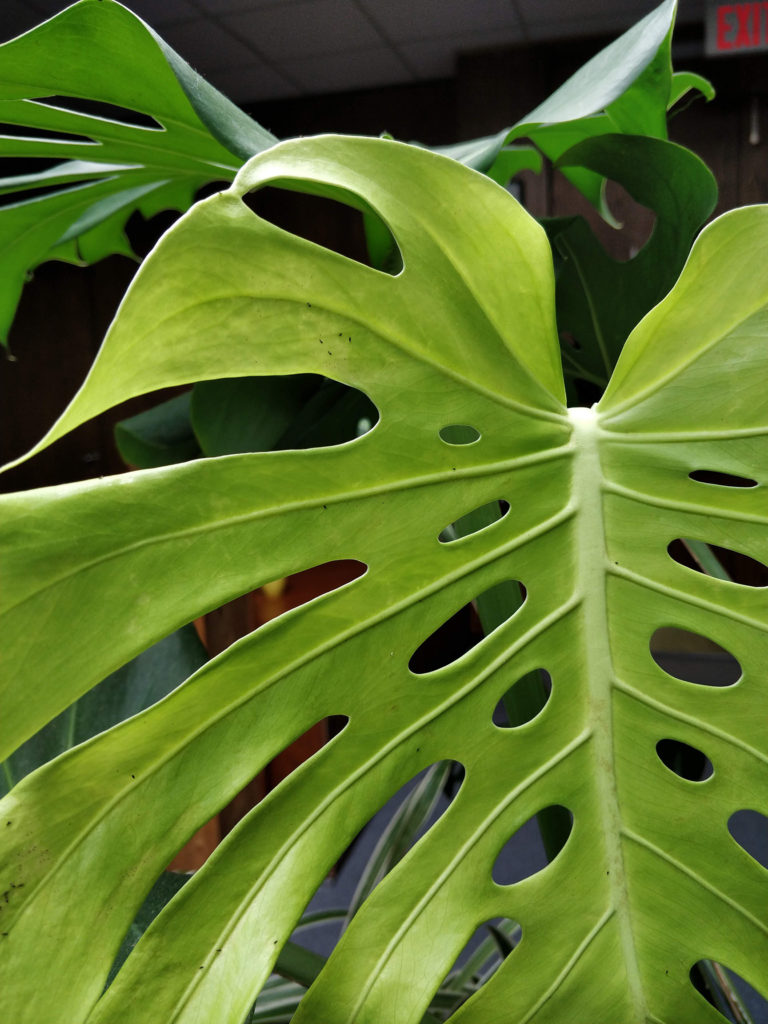
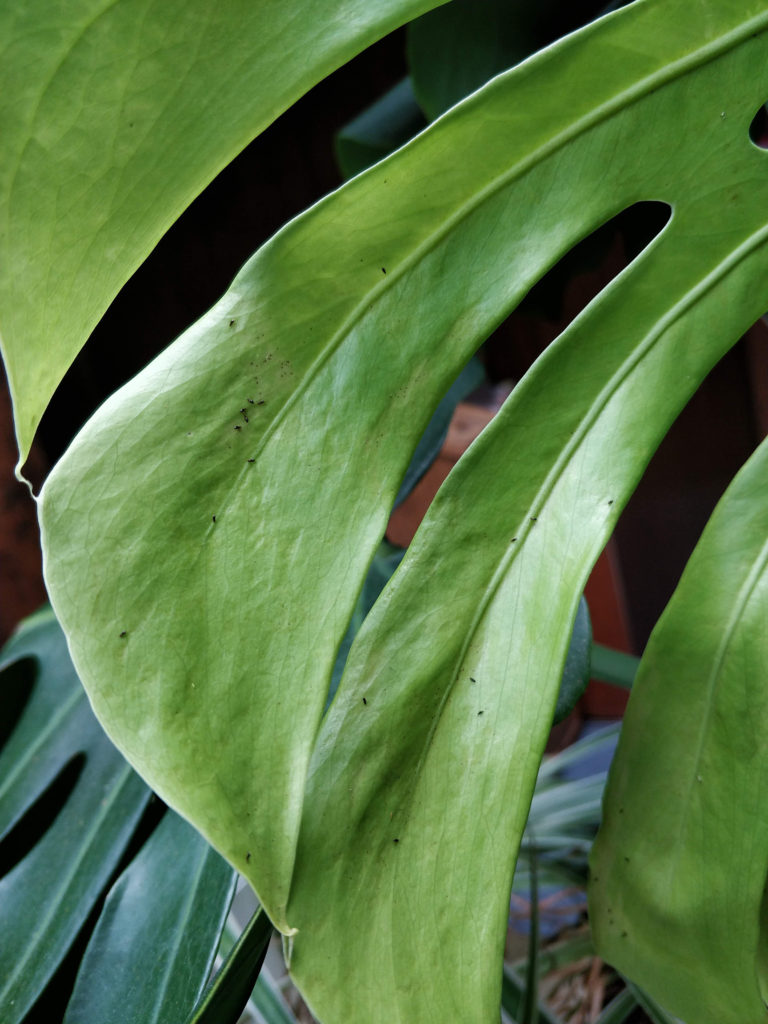
After about a year of lint roller treatments with the occasional spraying of insecticidal soap, my Monstera deliciosa is completely cleared of thrips! To be fair, after the first two weeks of treatments, the remaining months was mostly just killing the odd thrips here and there if I spotted one – I would simply take the lint roller and do a once-over of each leaf. The long-game wasn’t all that much work. I eventually got quite good at spotting even ONE thrips:
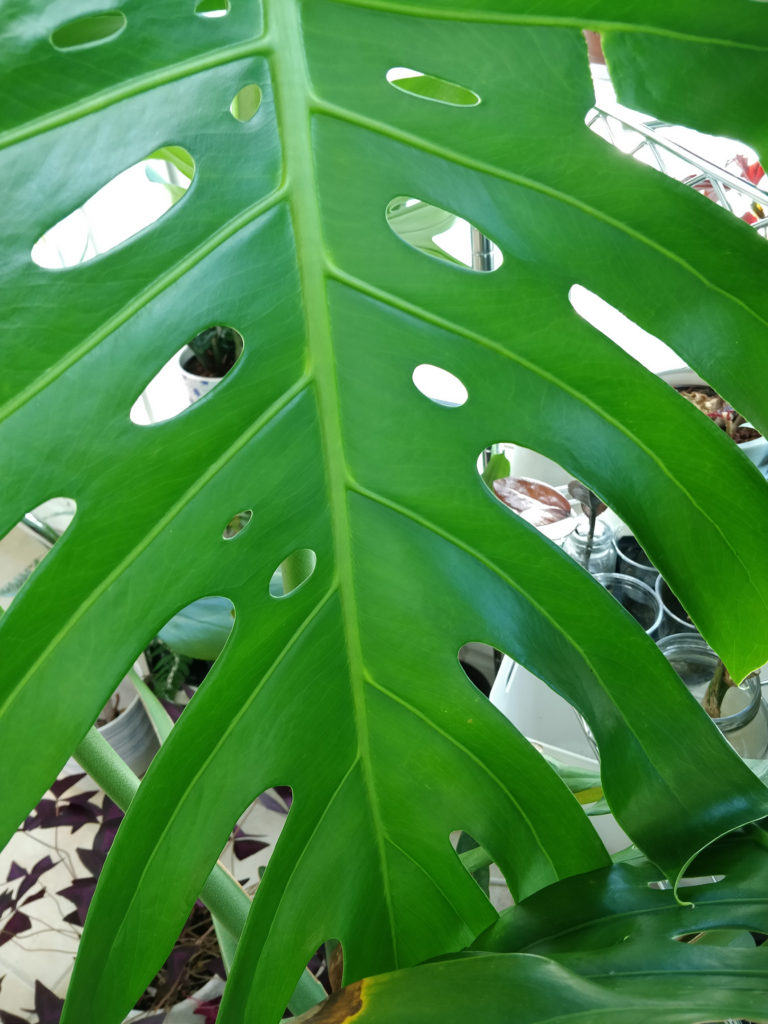
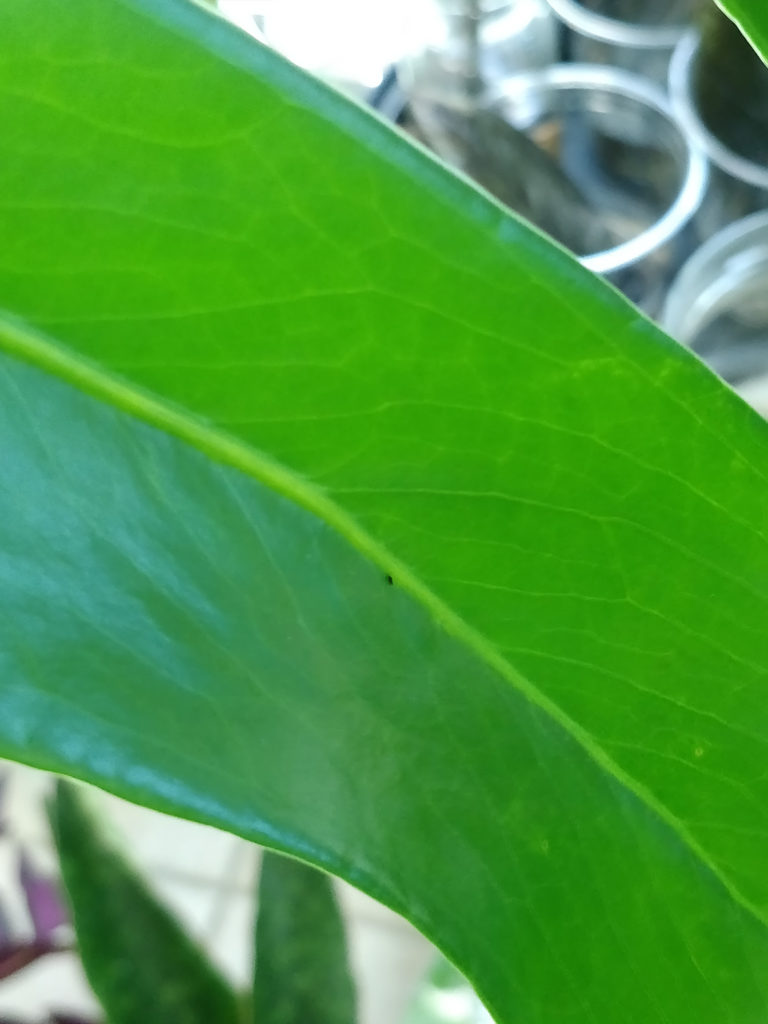
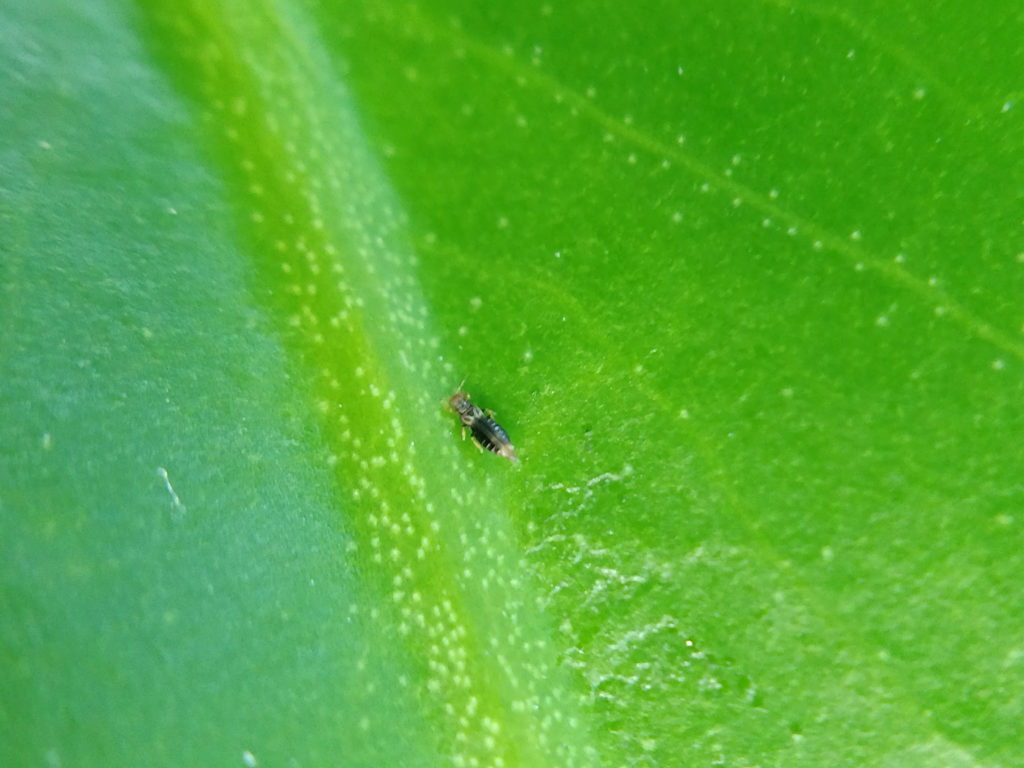
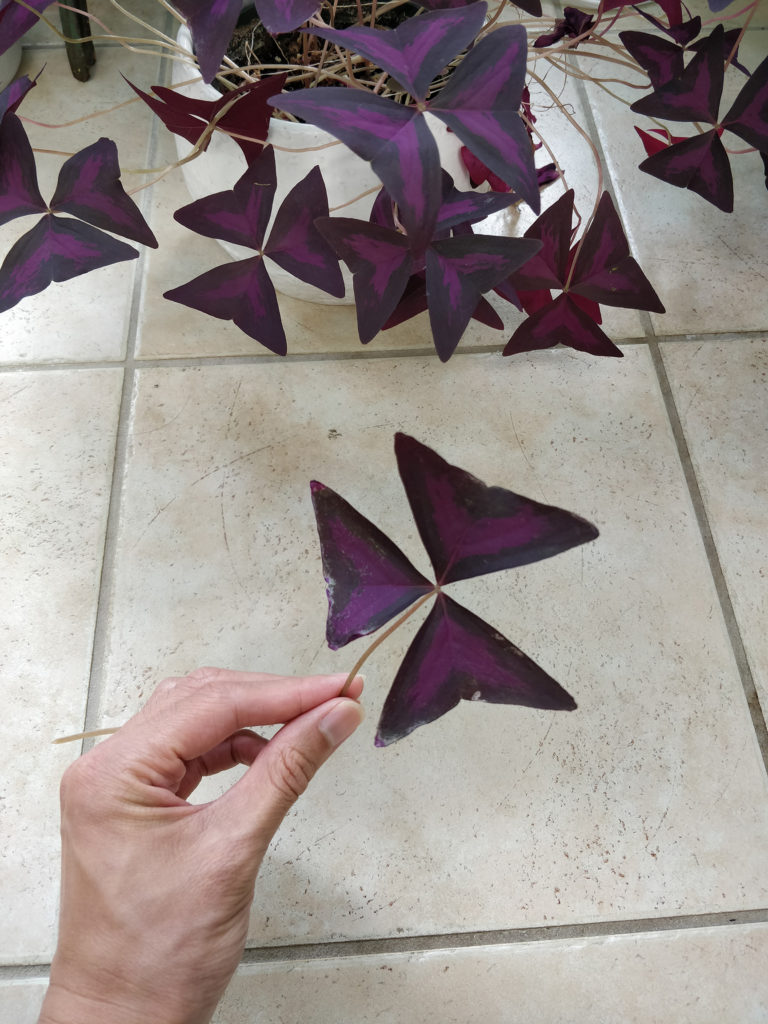
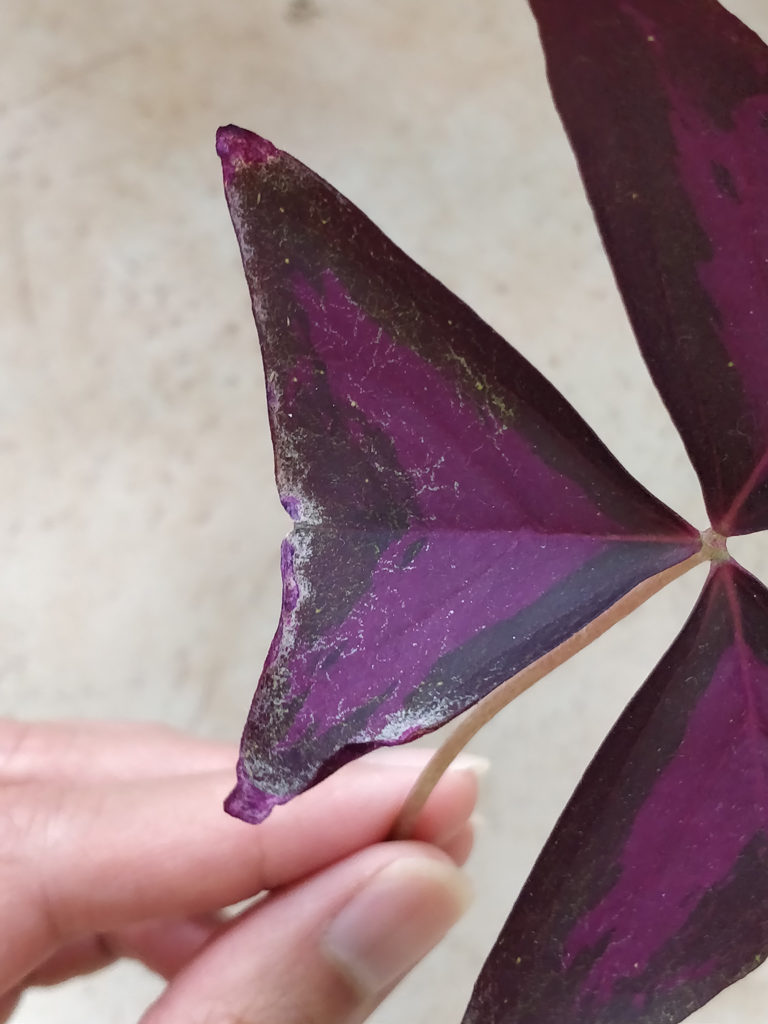
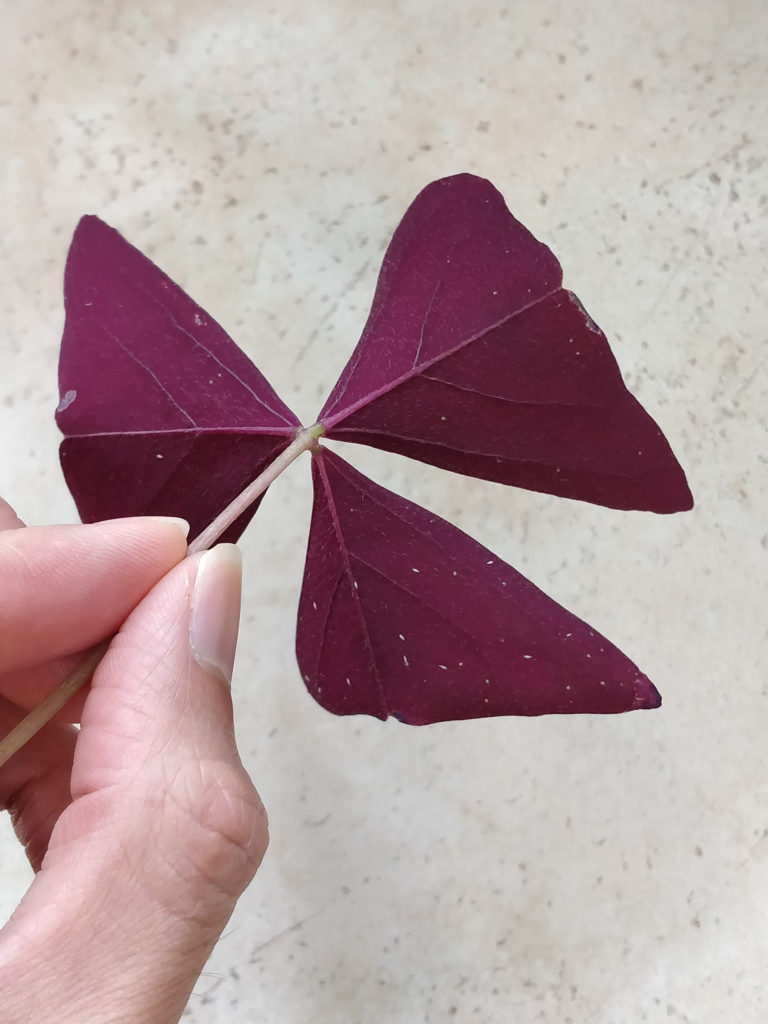
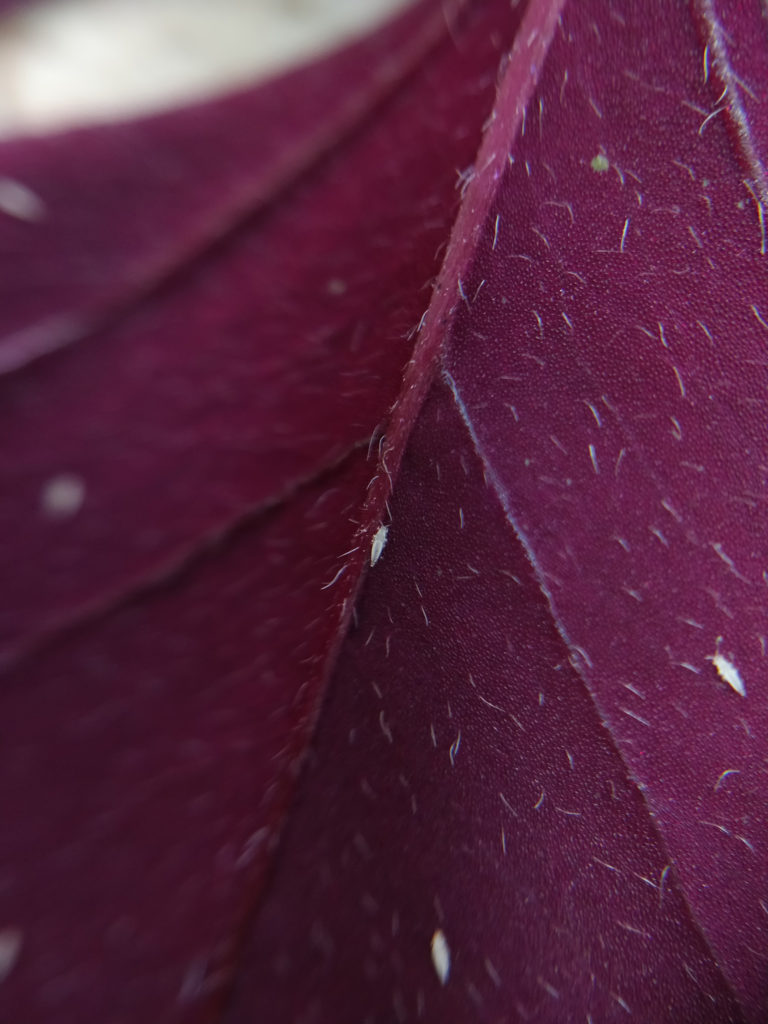
For my oxalis, I simply cut off any infested foliage because I knew the corm will eventually put out new leaves.
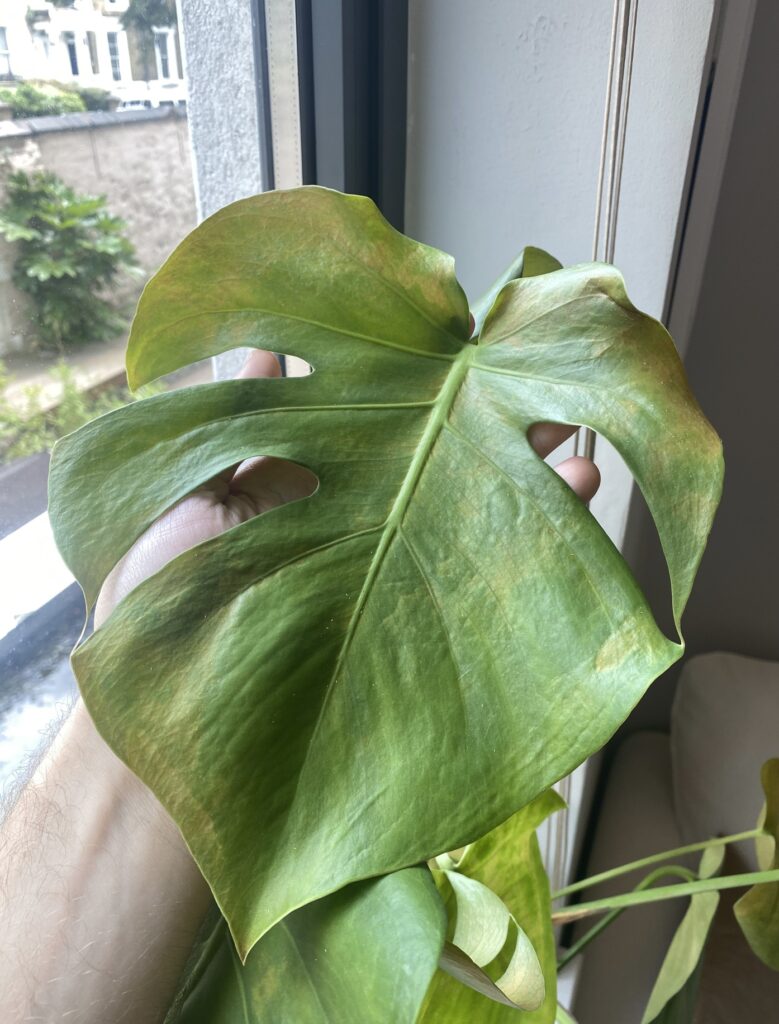
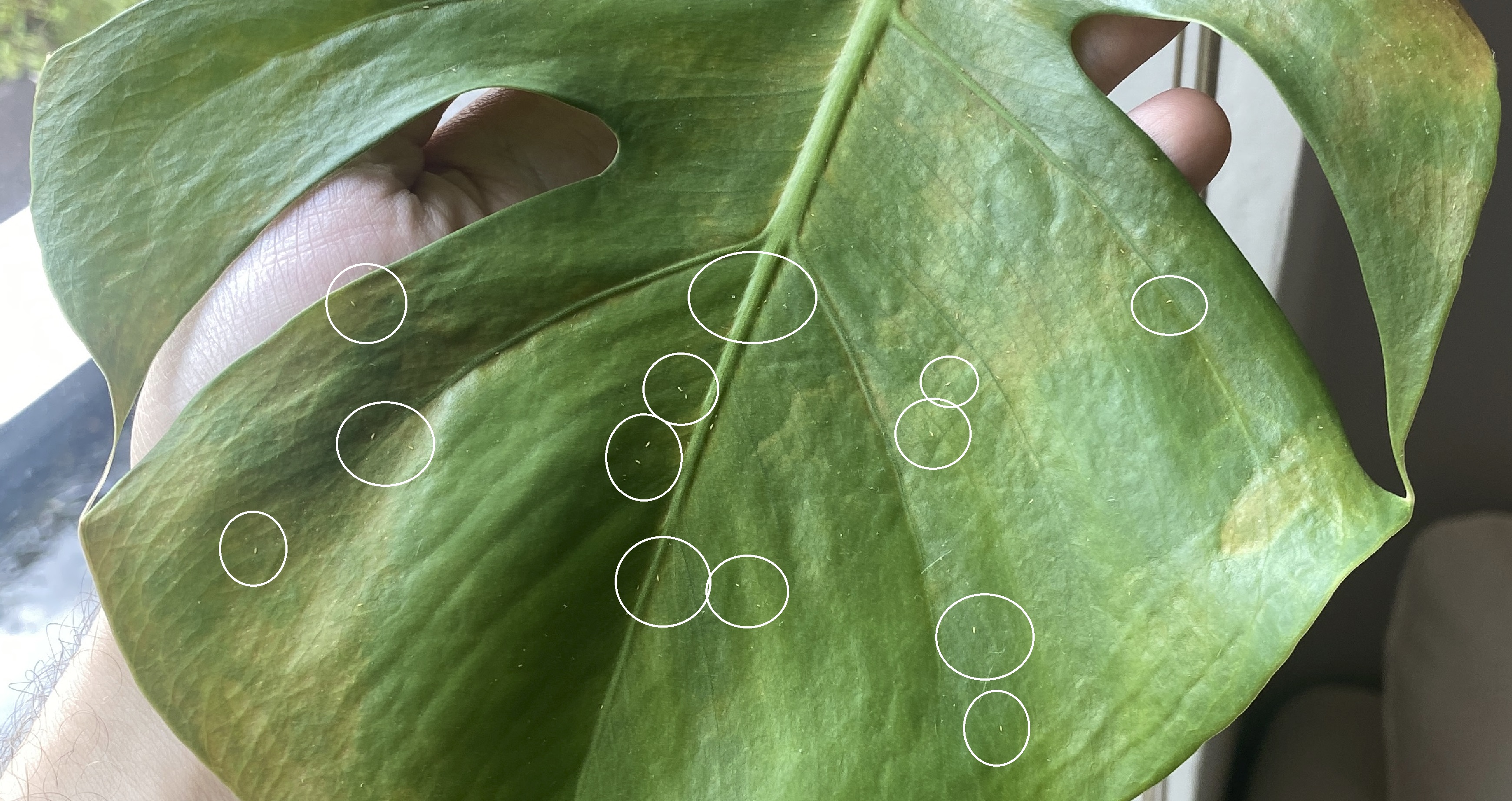
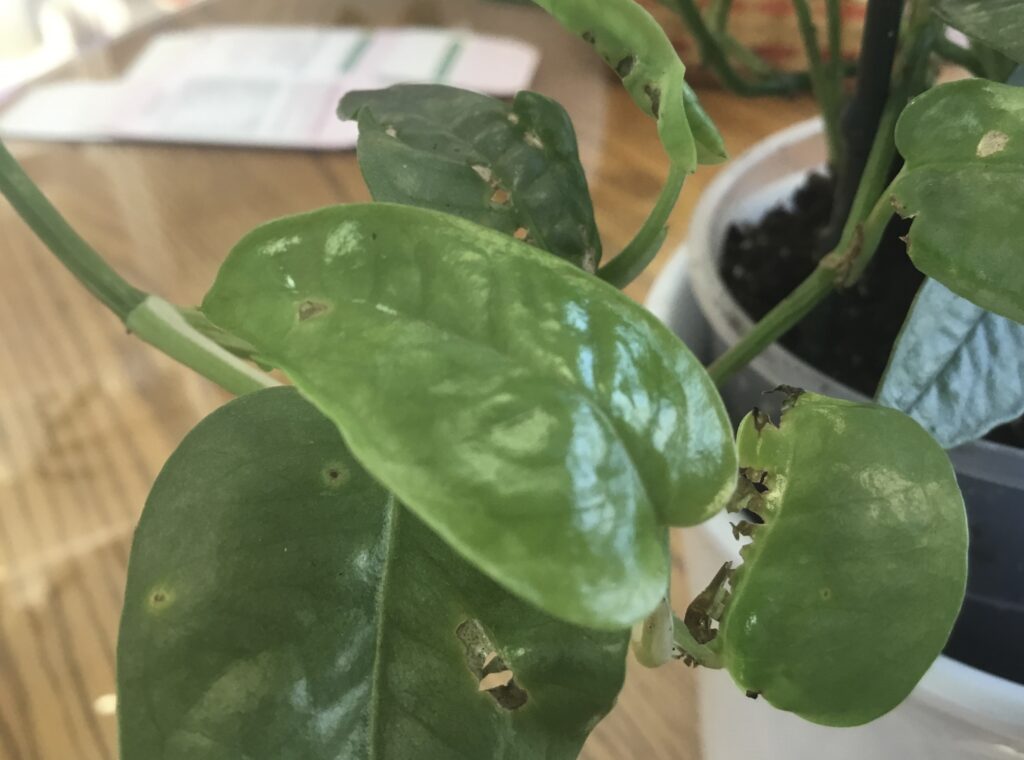
When you understand how plants work, you’ll feel more confident in their care and accept when things are out of your control – it’s a fine balance.
Learn this holistic approach to houseplant care in my online course: ‘Essentials of Houseplant Enjoyment’ (stop wasting your time with vague tips and tricks!)
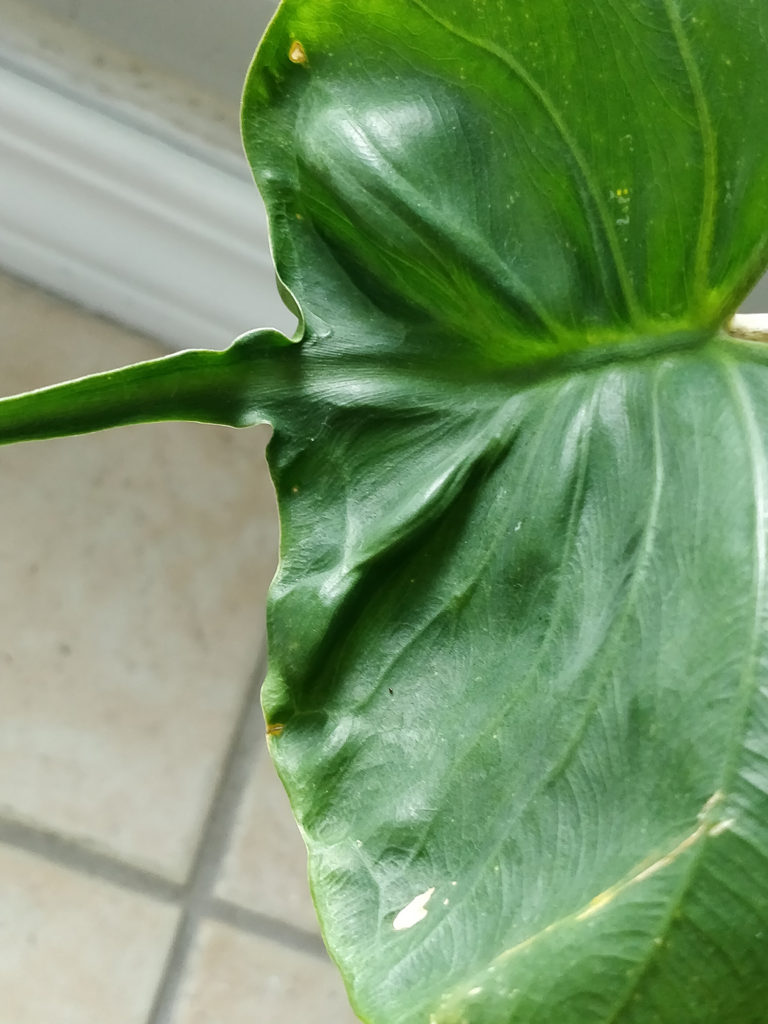
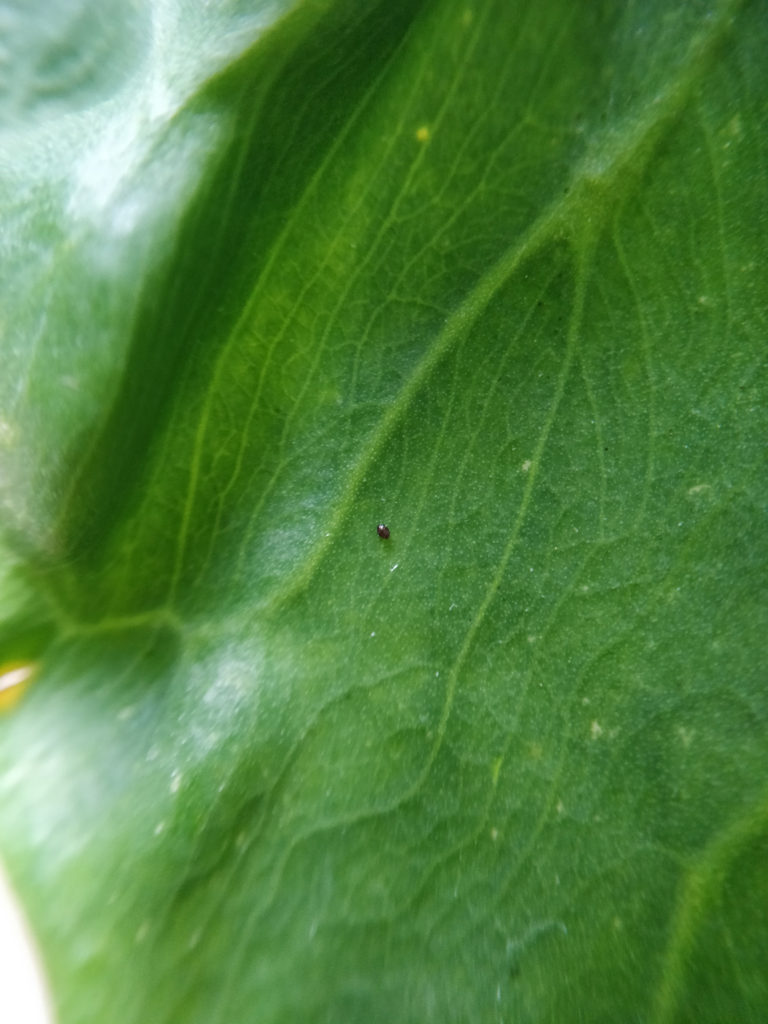
If you see a tiny black droplet that doesn’t move, it could be the excrement from thrips. I found this on the top of my Alocasia stingray leaf which hinted to me that I should check the back side…
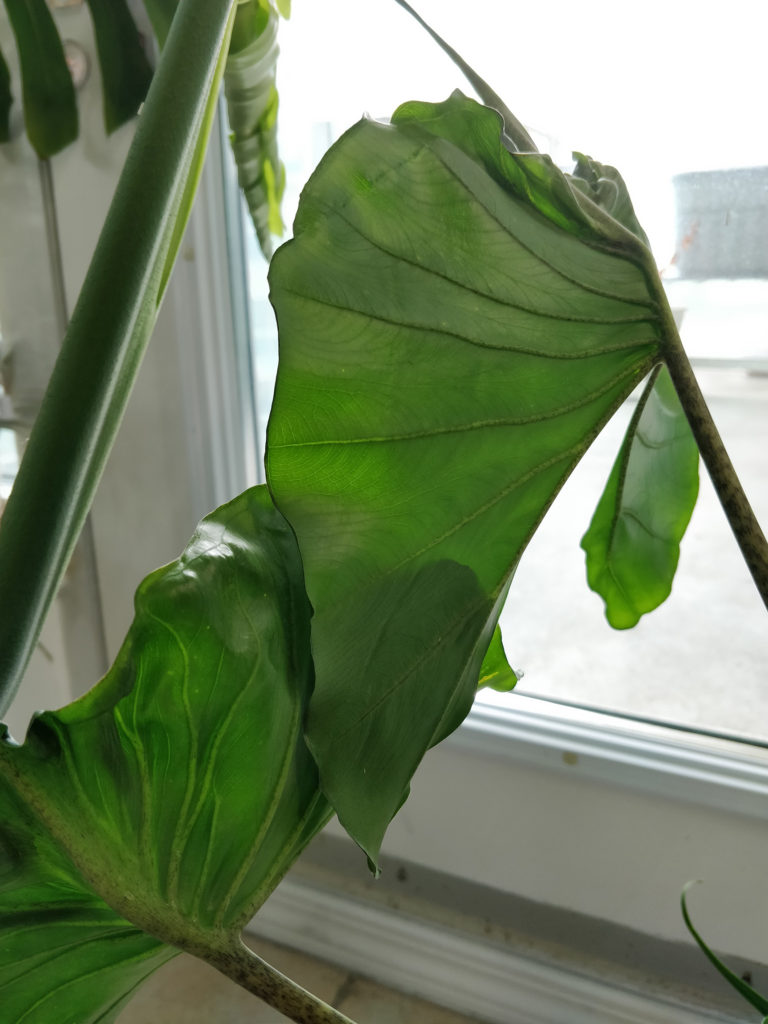
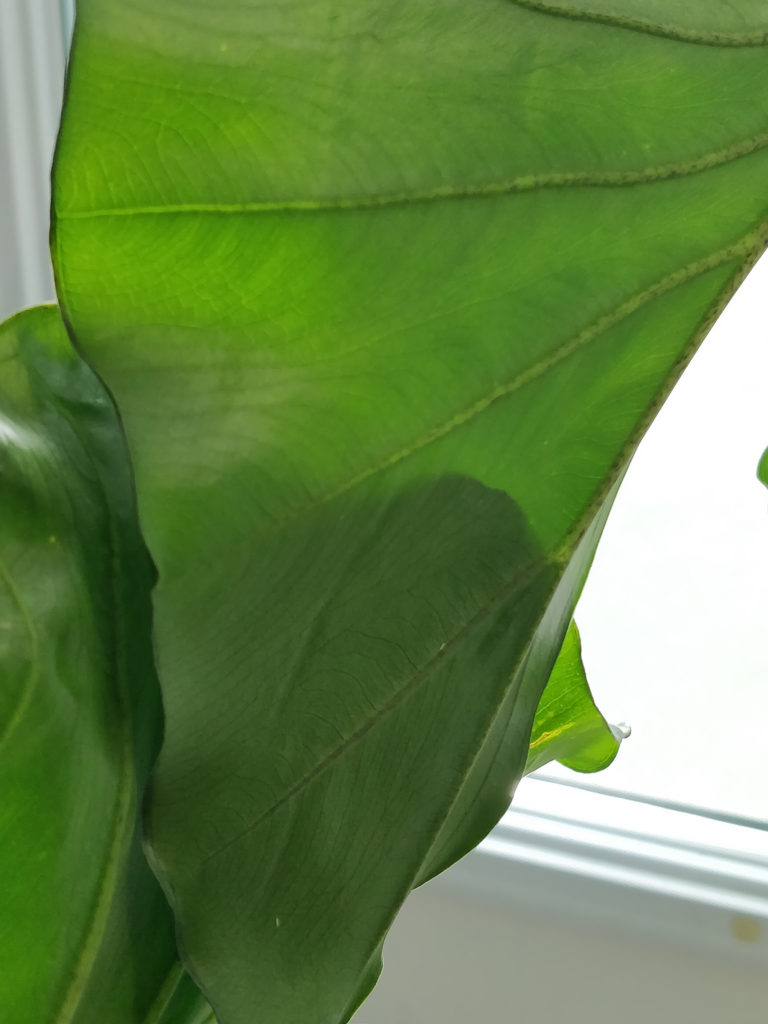
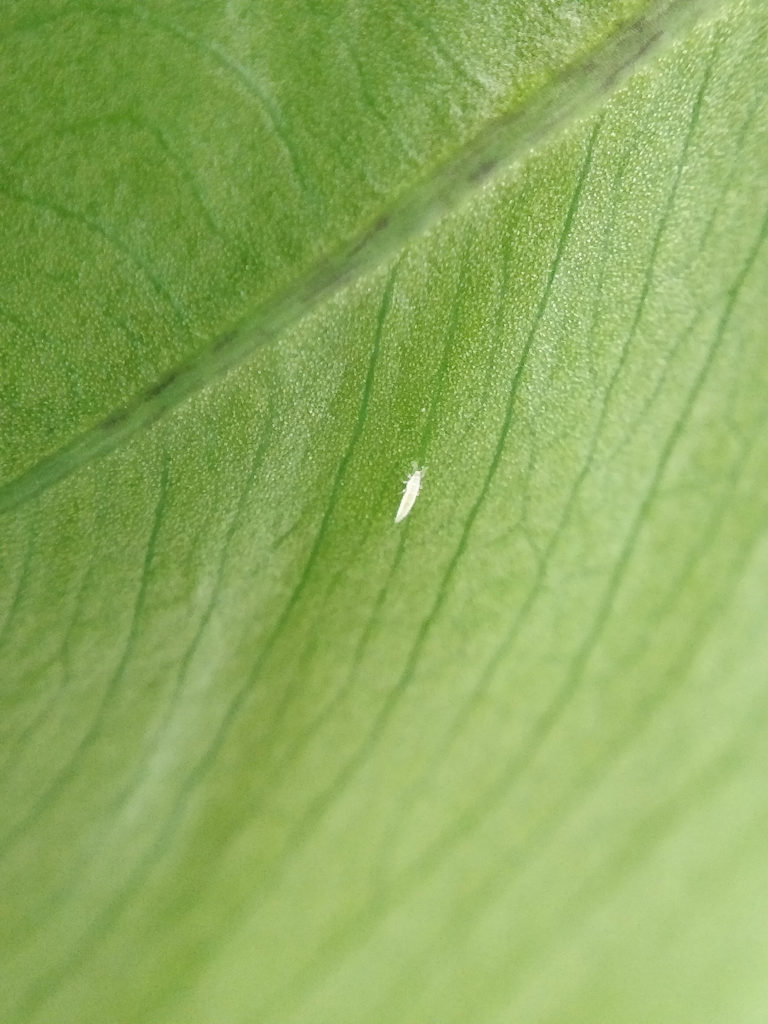
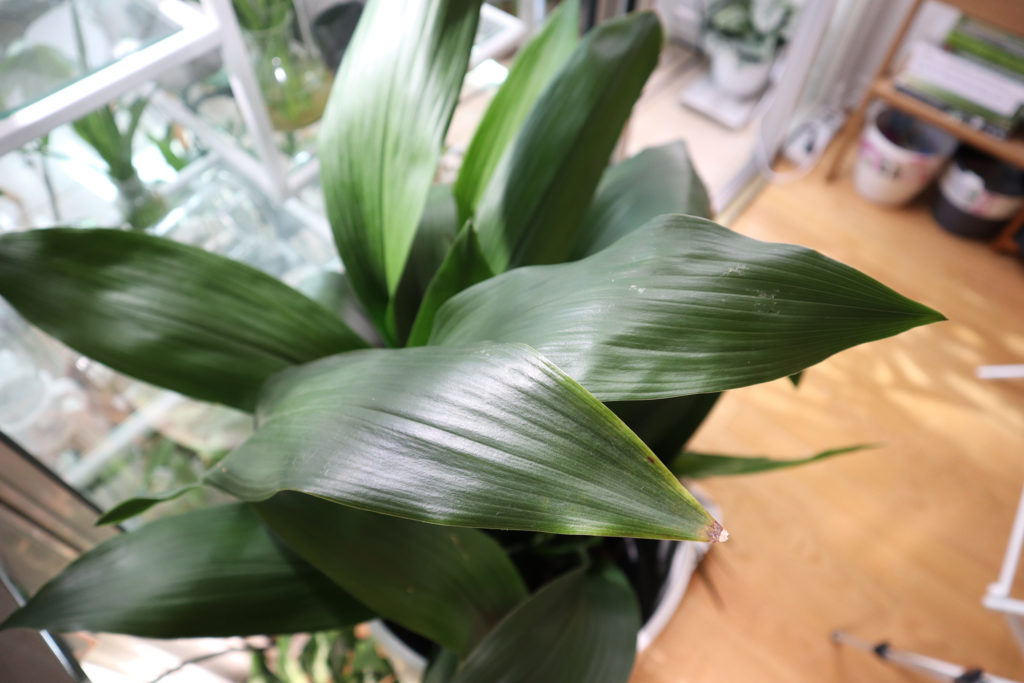
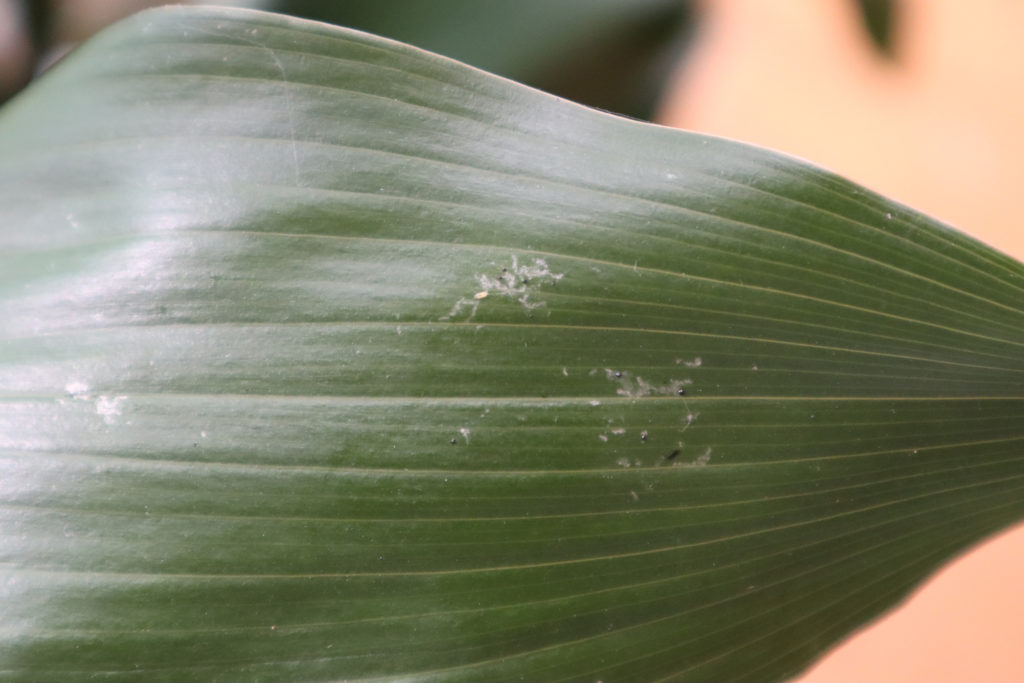
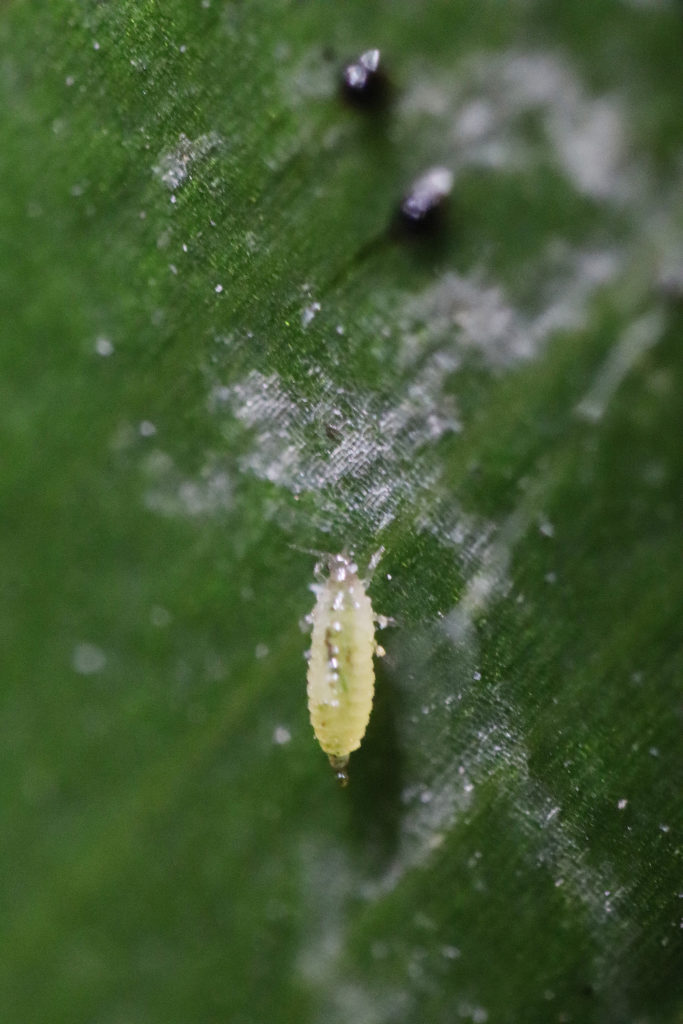
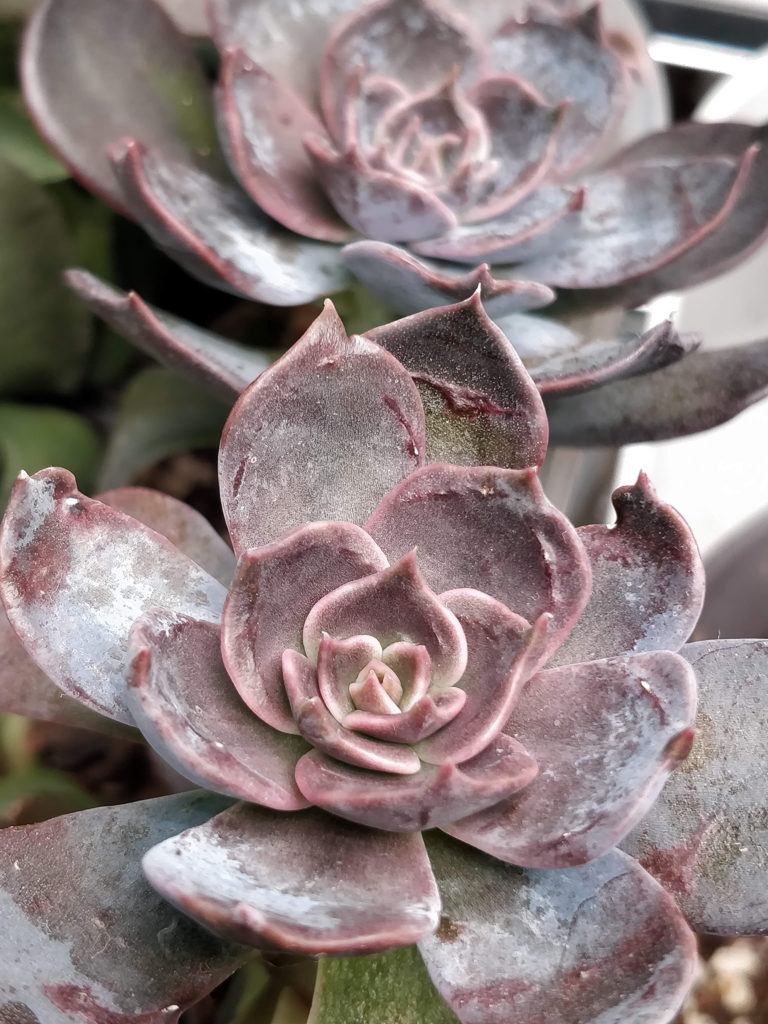
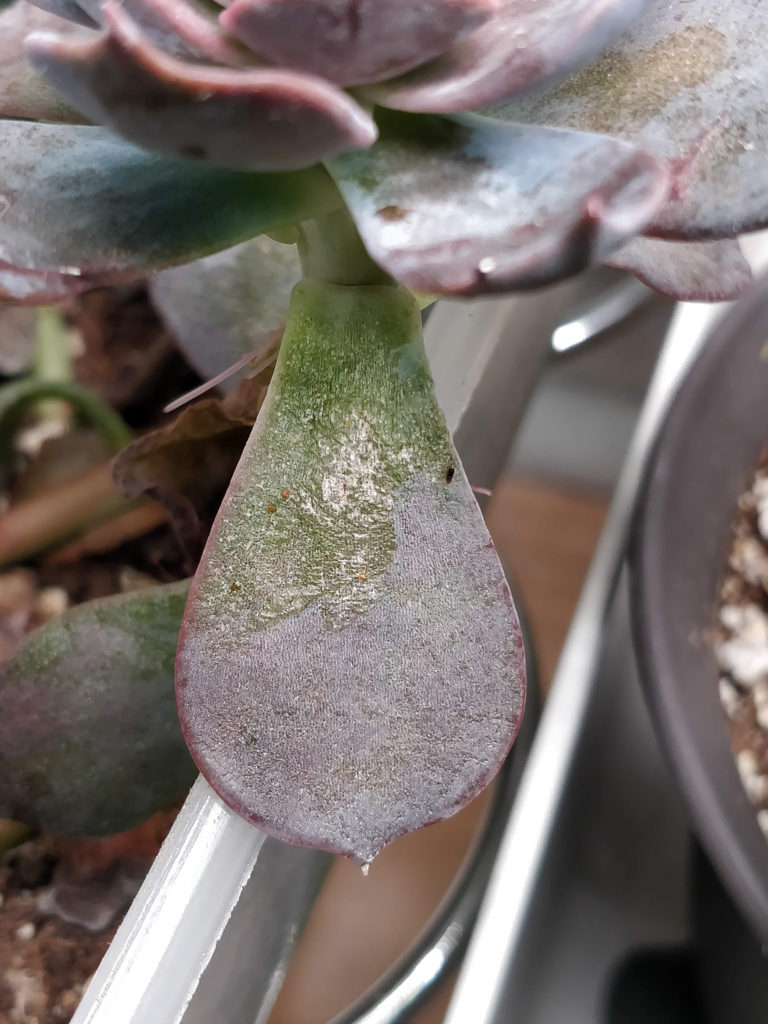
Because thrips lay their eggs inside plant tissues, leaves that would normally be smooth exhibit lumps as seen on this Echeveria. I ended up throwing these away 🙁
Throwing away a heavily infested plant is a perfectly sensible option as it will stop them from spreading to other plants in your collection, some of which may be of more sentimental value…or just plain more expensive!
Here’s a video I made about thrips when my Monstera ‘Thai Constellation’ was infested (thankfully cleared now!)
Finding thrips on people’s plants: here are several examples where people sent me photos of their sad plants and, upon closer inspection, I found thrips.
Other methods of controlling thrips:
Biological control – there are certain predators of thrips that you can purchase and deploy onto your infested plants. I personally haven’t tried biological control mostly out of personal preference.
Systemic insecticides – since I live in Canada, as a consumer, I’m not able to buy systemic insecticides to use for pest control so again, I do not have first-hand experience with them. If you do try them, make sure you’re following the instructions carefully – and make sure the product is suitable against thrips or whatever pest you’re dealing with.
I hope seeing these photos made you a better thrips detector! Don’t be discouraged if they seem to keep coming back – that’s to be expected. Just be persistent in physical removal and treatments – and be sensible enough to decide that maybe throwing away the plant is the best option. Here’s how my plants fared:
Successfully eradicated: Monstera deliciosa, ‘Thai Constellation’, oxalis, and Aspidistra eliator.
Discarded: Fiddle, Peperomia, Maranta, spider plants (4 of them!), Alocasia stingray, and Echeveria – may they rest in peace.
Tired of perfection-driven do’s and don’ts in houseplant care?
1. Enroll in my online course that actually makes sense of houseplant care.
2. Get the book that sets realistic expectations for a lifelong rewarding hobby:
